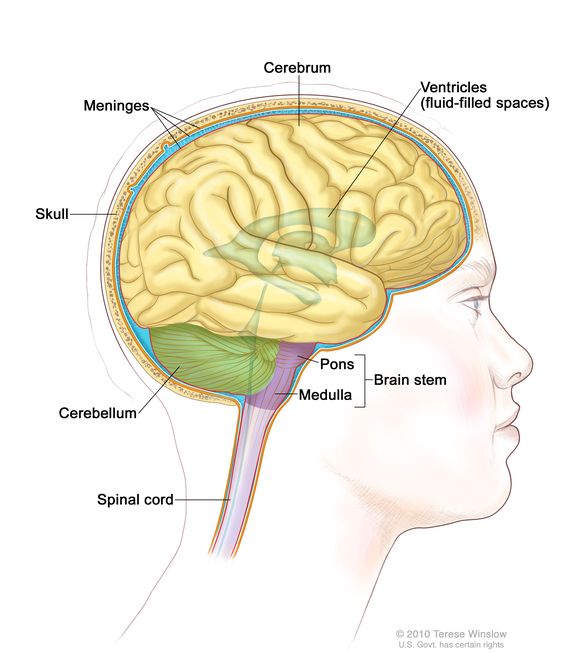wellwisher
Well-Known Member
All the divisive political emotional thinking is getting tiring, so I thought I would start a topic we can all share, since it applies to all humans on all sides of the divide.
The cerebellum is the part of the brain at the back of the skull in vertebrates. Its function is to coordinate and regulate muscular activity. Although smaller than their cerebrum, the cerebellum has 69 billion neurons, compare to 16 billion neurons for the cerebral cortex. It has more neurons, but less synapses per neuron.
The cerebellum allows smooth muscle movement; timing and coordination. Robots and video game characters do not yet move as smoothly as natural movement, since they are cerebrally trained; programmers, but lack cerebellum training. My guess is more neurons with fewer synapses, is about done deals; perfect. The cerebral; fewer neurons with more synapses is more about open concept.

The other day, I was thinking about the cerebellum and how speaking, reading and writing all require the cerebellum to control and time various muscle movements; eyes, voice and hands, in ways that allow a consistency of input/output, so human language could form, persist and be copied.
Modern human language is considered quite new, in terms of human evolution. Logically it would have needed a cerebellum advancement; update, for the smooth vocal muscle output, that can consistently express the subtle sounds of words. Damage to the cerebellum can make it hard to talk properly; undermine the muscle timing precision needed for language,
The cerebellum is also important to all forms of artistic expression from singing, dancing, painting, acting, etc. It is needed to help coordinate movement for physical jobs, sports and even warfare. In many ways the cerebellum advancement, no too long ago, allowed culture to advance; increasingly precise fabrication of tools, structures, social interactions, etc.
What is even more intriguing is our body, when we walk; human action, we use pairs of arms and legs, which work in opposite ways to help balance the body. This 2-D movement; equal and opposite, may quite well underly cause and affect; logic and other 2-D concepts. Yoga and many forms of martial arts teach a connection between movement and clarity of thought; reground the cerebral.
I like to go for daily walks. This clears my head and often gets my cerebral brain flowing in thought. Is the cerebellum the foundation of thought? It is not the pinnacle. But when we talk, write and discuss, our ideas need to go through the cerebellum, last, to be polished.
The cerebellum is the part of the brain at the back of the skull in vertebrates. Its function is to coordinate and regulate muscular activity. Although smaller than their cerebrum, the cerebellum has 69 billion neurons, compare to 16 billion neurons for the cerebral cortex. It has more neurons, but less synapses per neuron.
The cerebellum allows smooth muscle movement; timing and coordination. Robots and video game characters do not yet move as smoothly as natural movement, since they are cerebrally trained; programmers, but lack cerebellum training. My guess is more neurons with fewer synapses, is about done deals; perfect. The cerebral; fewer neurons with more synapses is more about open concept.

The other day, I was thinking about the cerebellum and how speaking, reading and writing all require the cerebellum to control and time various muscle movements; eyes, voice and hands, in ways that allow a consistency of input/output, so human language could form, persist and be copied.
Modern human language is considered quite new, in terms of human evolution. Logically it would have needed a cerebellum advancement; update, for the smooth vocal muscle output, that can consistently express the subtle sounds of words. Damage to the cerebellum can make it hard to talk properly; undermine the muscle timing precision needed for language,
The cerebellum is also important to all forms of artistic expression from singing, dancing, painting, acting, etc. It is needed to help coordinate movement for physical jobs, sports and even warfare. In many ways the cerebellum advancement, no too long ago, allowed culture to advance; increasingly precise fabrication of tools, structures, social interactions, etc.
What is even more intriguing is our body, when we walk; human action, we use pairs of arms and legs, which work in opposite ways to help balance the body. This 2-D movement; equal and opposite, may quite well underly cause and affect; logic and other 2-D concepts. Yoga and many forms of martial arts teach a connection between movement and clarity of thought; reground the cerebral.
I like to go for daily walks. This clears my head and often gets my cerebral brain flowing in thought. Is the cerebellum the foundation of thought? It is not the pinnacle. But when we talk, write and discuss, our ideas need to go through the cerebellum, last, to be polished.
Last edited:
